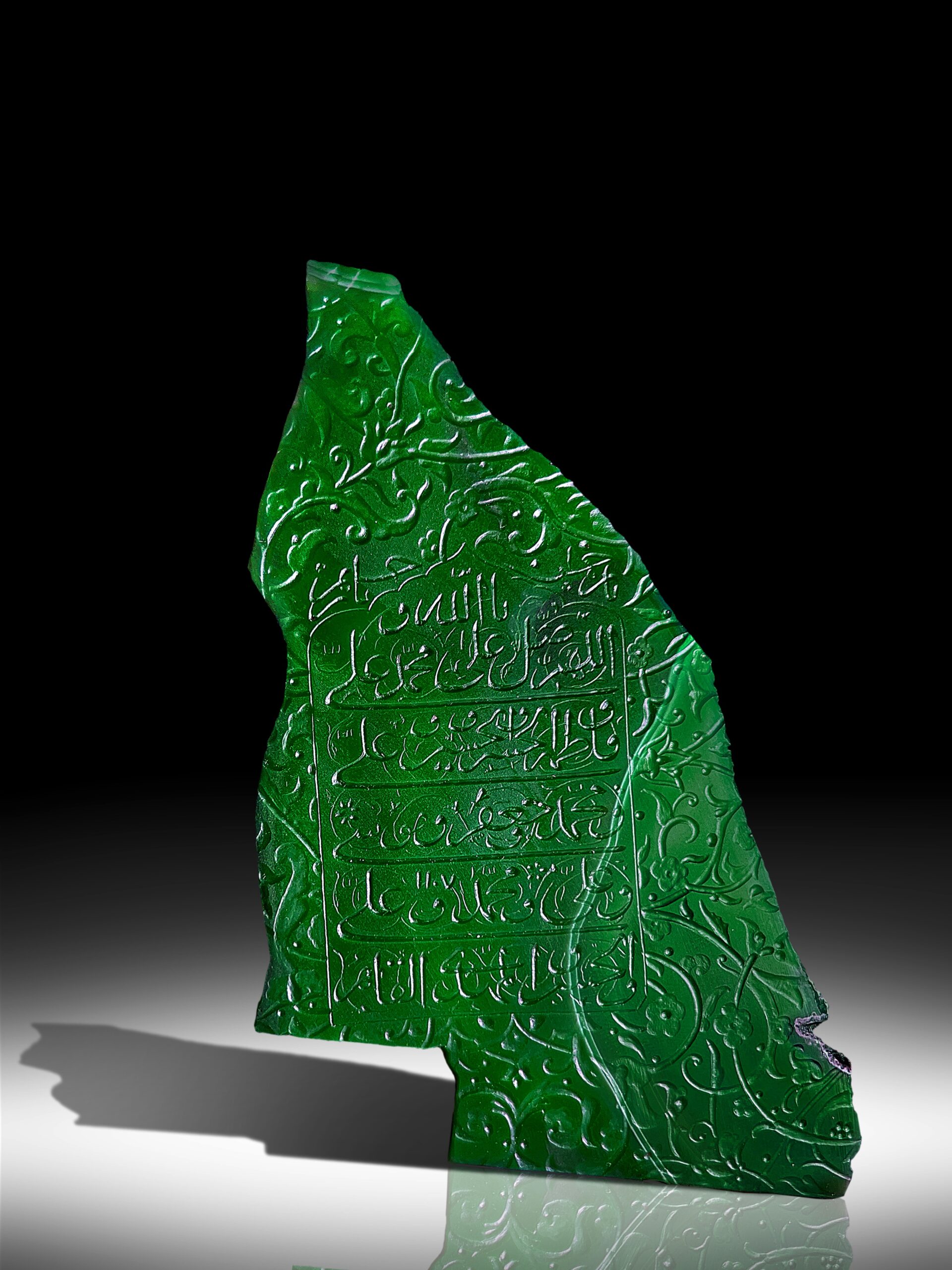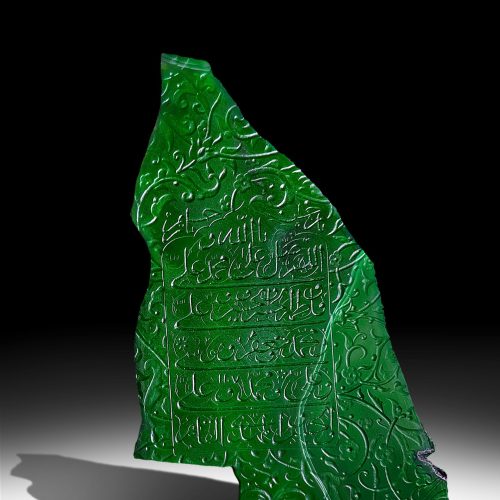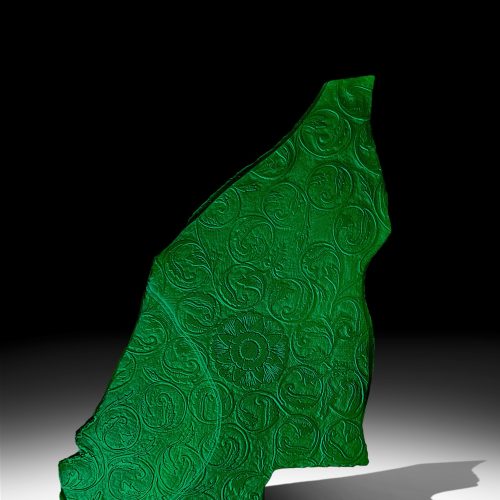DESCRIPTION: | A MAGNIFICENT PIECE OF MUGHAL GREEN JADE CARVED, Shah Jahan ruled the Mughal Empire between 1628 and 1658. During his reign, the empire reached the pinnacle of its glory, making Shah Jahan one of its most important emperors.Mughal, dated AH 1107/1695-6 AD. An exquisite Mughal Green Jade known as ‘The Mughal obverse engraved with Shi’a invocations in elegant naskh script, dated 1107 A.H., the reverse carved all over with foliate decoration, the central rosette flanked by single large poppy flowers, with a line of three smaller poppy flowers either side, the bevelled edges carved with cross pattern incisions and herringbone decoration |
|---|
Lot Notes: | The inscription contains a Shi’a prayer blessing Muhammad and the twelve Imams; and the hijra date 1107 which transposes to 1695 -96 A.D. In full it reads: O Merciful One, O Compassionate One
O God
God bless Muhammad and ‘Ali
and Fatima and al-Husain
and al-Hasan and ‘Ali
and Muhammad and Ja’far
and Musa
1107
and ‘Ali and Muhammad
and ‘Ali
and al-Husaini Lot Article:The date places it to the reign of Emperor Aurangzeb (1658 – 1707), the last of the four great Mughal rulers who ruled between them for 150 years. This emerald is the benchmark for the dating of all other Indian-carved emeralds.Fine large emeralds were unknown until their discovery in Colombia by the Spanish Conquistadors of the 16th and 17th centuries. They were extremely popular in all three of the great Islamic empires of the time: the Ottoman Turks, the Safavid Persians and the Mughal Indians; so much so that none appear to have been retained at the time in Europe. They reached India via Spain as trade goods during the Mughal dynasty. They were highly prized by the Indians who used them mainly as beads or in gold artefacts. The Mughal Emperors were Sunni and therefore the Shi’a prayer would suggest that this stone should not be associated directly with the emperor Aurangzeb himself, particularly since by this date he had become somewhat of a religious zealot. It is likely, however, that it would have belonged to one of the Emperor’s officers, many of whom were of Shi’a Deccani and Persian origin. It could also have belonged to one of the great nobles of the Deccan where Shiism was the predominant sect of Islam, possibly from either Golconda or Hyderabad.The reverse side of the emerald is carved with a central rosette, poppy flowers and scrolling foliate detail, typical of the naturalistic decoration of the period reflecting the Mughal love of nature. Worn as a talisman with the inscription facing outward, it was mounted and secured by the drill holes to each side.Centuries of tradition have held certain precious stones to be imbued with powers radiated by celestial bodies. A logical inference was to augment this phenomenon by carving the stone with a suitable image of a deity, with symbols or with writing. In addition to this, the green colour of emerald holds a special significance within Islam; for this reason, it is especially suited for engraving as a talisman. The other stone frequently used for Moslem religious inscriptions is jade, again with its variations of green colour. |
|---|







